Publications by George Ioannakis
Papers by George Ioannakis

IEEE Transactions on Multimedia, 2017
Performance evaluation is one of the main research topics in information retrieval. Evaluation me... more Performance evaluation is one of the main research topics in information retrieval. Evaluation metrics are used to quantify various performance aspects of a retrieval method. These metrics assist in identifying the optimum method for a specific retrieval challenge but also to allow its parameters fine-tuning in order to achieve a robust operation for a given set of requirements specification. In this work, we present RETRIEVAL, a Web-based integrated information retrieval performance evaluation platform. It offers a number of metrics that are popular within the scientific community, so as to compose an efficient framework for implementing performance evaluation. We discuss the functionality of RETRIEVAL by citing important aspects such as the data input approaches, the user-level performance metrics parameterization, the evaluation scenarios, the interactive plots, and the performance reports repository that offers both archiving and download functionalities.
Despite numerous recent efforts, 3D object retrieval based on partial shape queries remains a cha... more Despite numerous recent efforts, 3D object retrieval based on partial shape queries remains a challenging problem, far from being solved. The problem can be defined as: given a partial view of a shape as query, retrieve all partially similar 3D models from a repository. The objective of this track is to evaluate the performance of partial 3D object retrieval methods, for partial shape queries of various scan qualities and degrees of partiality. The retrieval problem is often found in cultural heritage applications, for which partial scans of objects query a dataset of geometrically distinct classes.

The aim of this work is to generate a spatial-consistent UV maps of a 3D object's texture sui... more The aim of this work is to generate a spatial-consistent UV maps of a 3D object's texture suitable for 2D image processing algorithms. An approach to produce such a fully spatially consistent UV mapping suitable for image processing based on the planar parameterisation of the mesh is presented. The mesh of a 3D model is parametrised onto a unit square 2D plane using computational conformal geometry techniques. The proposed method is genus independent, due to an iterative 3D mesh cutting procedure. The selection of the initial seed vertex for the mesh-cut is not essential for the parameterisation of the geometry, however it affects heavily the appearance of the obtained texture map. In this work we attempt to determine such a seed vertex, in order the UV map to be suitable for image processing. Having the texture of a 3D model depicted on a spatially continuous two dimensional structure enables us to efficiently apply well known image processing based techniques and algorithms. O...

Performance evaluation is one of the main research topics in information retrieval. Evaluation me... more Performance evaluation is one of the main research topics in information retrieval. Evaluation metrics in combination with benchmark datasets (groundtruth) are used to quantify various performance aspects of a retrieval algorithm. In this paper, we present the Orion Pottery Repository, a publicly available and domain specific benchmark database. It is based on open source technologies and contains a total of 160 textured 3D digital replicas of ancient Greek pottery. The dataset offered through the repository can be used for performance evaluation experiments of 3D data retrieval algorithms. Orion’s content has been classified according to a pottery shape categorization defined by an in-house developed thesaurus. The repository provides mechanisms that allow a wide range of metadata handling that are based on the CARARE metadata schema which among others it offers the ability to include information related to digitization procedures and their properties.
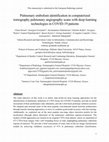
The main objective of this work is to utilize state-of-the-art deep learning approaches for the i... more The main objective of this work is to utilize state-of-the-art deep learning approaches for the identification of pulmonary embolism in CTPA-Scans for COVID-19 patients, provide an initial assessment of their performance and, ultimately, provide a fast-track prototype solution (system). We adopted and assessed some of the most popular convolutional neural network architectures through transfer learning approaches, to strive to combine good model accuracy with fast training. Additionally, we exploited one of the most popular one-stage object detection models for the localization (through object detection) of the pulmonary embolism regions-of-interests. The models of both approaches are trained on an original CTPA-Scan dataset, where we annotated of 673 CTPA-Scan images with 1,465 bounding boxes in total, highlighting pulmonary embolism regions-of-interests. We provide a brief assessment of some state-of-the-art image classification models by achieving validation accuracies of 91% in ...
3D model texture-based segmentation using multispectral imagery to define its construction materi... more 3D model texture-based segmentation using multispectral imagery to define its construction materials is addressed within the scope of this work. An end-to-end pipeline is proposed to digitize a real-world object, construct a spatial consistent multispectral texture map and to identify materials on its surface. A multispectral camera capable of capturing ultraviolet to near infrared imagery is used to create image sequences for its Structure-from-Motion based 3D reconstruction. We utilize computational geometry techniques to create a spatial-consistent texture based on ultraviolet to near infrared imagery. Various supervised learning approaches are utilized and evaluated on the identification of materials on a 3D model's surface. Experimental results are promising and reveal its capabilities in the study of 3D digitized models.
Exploiting 2D-manifold slicing and parameterisation techniques in order to manage a 3D model as a... more Exploiting 2D-manifold slicing and parameterisation techniques in order to manage a 3D model as a 2D representation is an active research field, that enables the application of a wide range of image processing and analysis techniques. In this work, we propose a method to represent a 3D model’s surface on a 2D regular grid and encode its k1 curvature, thus producing a new 3D geometry feature, the CurvMaps, that may be used for 3D model classification. The feature creating transformation relies on the identification of a 3D model’s geometrical "extrema", the computation of k1 principal curvature and its encoding into a 2D regular grid. The applicability of CurvMaps in 3D model classification is being discussed through the experimentation with a number of classical methods.
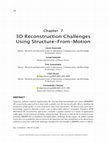
Applying Innovative Technologies in Heritage Science
Numerous software solutions implementing the structure-from-motion/multi-view stereo (SFM/MVS) 3D... more Numerous software solutions implementing the structure-from-motion/multi-view stereo (SFM/MVS) 3D reconstruction approach have been made available over the last two decades. Hence, enabling the production of high quality, in terms of geometry and colour information, 3D objects using solely unordered image sequences depicting a static scene or objects from arbitrary viewpoints. Nowadays, SFM/MVS-based 3D reconstruction approaches constitute a popular solution in a variety of applications within many research domains including cultural heritage. However, as with all 3D reconstruction approaches, SfM/MVS has its limitations and applicability challenges. In this chapter, the authors attempt to provide a set of guidelines that are based on the important outcomes of published works that propose solutions to overcome some of the challenges introduced by non-friendly to SfM/MVS scenes or objects.
Journal of Cultural Heritage

Journal of Cultural Heritage, 2021
Haptic prohibition is one of the most common limitations when interacting with museum artefacts. ... more Haptic prohibition is one of the most common limitations when interacting with museum artefacts. This restriction aims quite logically at preventing damages while safeguarding the integrity of the cultural reserve, which is primarily characterised by its uniqueness. Nevertheless, in cases where museum visitors are visually impaired, the inability to touch the artefacts makes the whole experience incomplete as the haptic perception of an artefact’s morphology is the primary substitute of sight. In this paper, we work towards a low-cost haptic ban removal by an initial establishment of a range of requirement specifications focused on the concept of a smart exhibit which is defined as a physical object that replicates the morphological features of an actual artefact while belonging in an ICT infrastructure that exploits features common in Internet of Things devices. We present a set of high level specifications and functionalities that could be offered by a smart exhibit and objectivel...
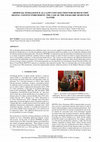
ISPRS - International Archives of the Photogrammetry, Remote Sensing and Spatial Information Sciences
The on-demand content enrichment of an exhibition center visit is an active applied research doma... more The on-demand content enrichment of an exhibition center visit is an active applied research domain. This work focuses on the exploitation of mobile devices as an efficient medium to deliver information related to an exhibit or an area within the exhibition center by utilizing machine learning approaches. We present YPOPSEI, an integrated system that formulates the information retrieval task as an image recognition mechanism, enabling visitors to simply capture an entity of interest in order to acquire information similar to a tour-guidance experience via their personal mobile devices. This scheme not only minimizes the additional infrastructure requirements, but additionally enhances the versatility in cases of exhibits topology alterations while still providing high accuracy in terms of image content recognition. Two hybrid approaches are developed that set Convolutional Neural Networks (CNNs) and Bags of Visual Words (BOVWs) to operate in a synergistic and cooperative manner. They are evaluated under real-world conditions on a client-server Web architecture system that experimentally operates within the premises of the Folklore Museum of Xanthi, Greece.
ISPRS Annals of Photogrammetry, Remote Sensing and Spatial Information Sciences, 2014

Journal of Cultural Heritage, 2015
ABSTRACT One of the factors that determine the data quality produced by targetless photogrammetri... more ABSTRACT One of the factors that determine the data quality produced by targetless photogrammetric techniques is the feature richness of the surface being captured. The Structure-From-Motion and Multiple View Stereovision (SFM-MVS) pipeline is no exception to this rule as it relies on the ability to identify corresponding points within a collection of unordered images. In this work, we question the introduction of noise function-based pattern (NFP) projection in the SFM-MVS data collection phase in order to enhance the reconstruction performance when applied on featureless surfaces. We selected a set of NFPs and we demonstrate their reconstruction performance enhancement on a Cycladic figurine by using a commercial SFM-MVS software package. We quantify each NFP's behaviour in relation to the produced data. We correlate the reconstruction results with band limiting and aliasing pattern characteristics. We compare the SFM-MVS data with those produced by digitising the same artefact with a laser triangulation scanner. We discuss the NFPs performance along with the advantages of the proposed methodology and its limitations.



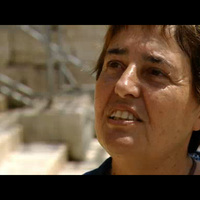

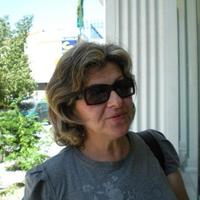




Uploads
Publications by George Ioannakis
Papers by George Ioannakis